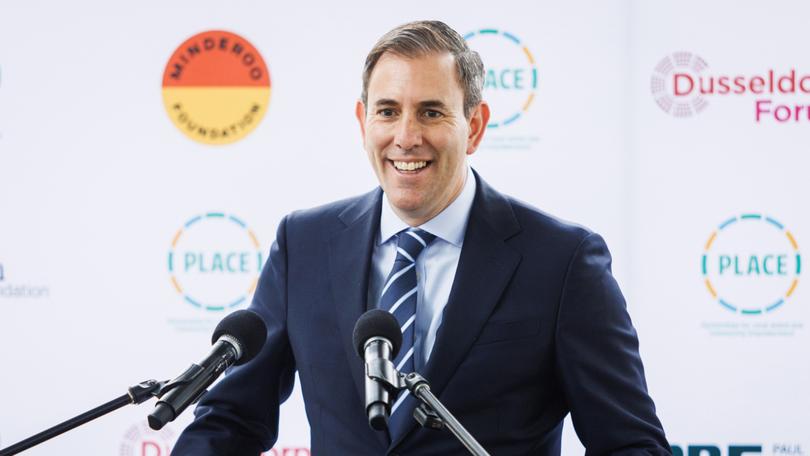Treasurer Jim Chalmers offers States a $900m productivity carrot

Jim Chalmers will put $900 million in incentives on the table for the States to make actual economic improvements including streamlining commercial zones and slashing red tape around pre-fabricated houses.
The Treasurer will also pledge the Commonwealth will fast-track the use of foreign product safety standards from trusted countries and establish a general “right to repair” that gives people more choice over where to get things fixed.
These two moves combined are tipped to save businesses and consumers a combined $5.4 billion over the next decade.
Sign up to The Nightly's newsletters.
Get the first look at the digital newspaper, curated daily stories and breaking headlines delivered to your inbox.
By continuing you agree to our Terms and Privacy Policy.Dr Chalmers will use a speech to the Australian Business Economists group on Wednesday to highlight the importance of similar small measures to revitalise competition — and thus stagnating productivity — in a bid to boost economic growth while saving people money.
A Productivity Commission examination of changes that could be made to the 30-year-old National Competition Policy has found small but important tweaks could add $45 billion a year to Australia’s GDP – or about an extra $5000 per household – while cutting prices by 1.45 percentage points.
“More competition means a more productive and more dynamic economy, with better jobs, more choices and growth, and fairer prices,” Dr Chalmers will say.
“In other words, we’re not seeking productivity growth at the cost of higher unemployment or by insisting Australians work longer for less.
“We’re applying new thinking to the challenge, broadening our ambitions beyond the tired slogans of scorched earth industrial relations.”
He will meet next month with State and Territory counterparts to consider what should be on the “menu of options” they can choose to implement to get some of the new $900 million national productivity fund.
“It’s all about rewarding states with more revenue, where they deliver meaningful and measurable economic reforms,” Dr Chalmers will say.
The incentives for the states to boost the uptake of modern construction methods could also help the Federal Government’s target to build 1.2 million new homes.
Industry Minister Ed Husic has also been examining what red tape is hindering greater use of pre-fabricated and modular homes and intends to release the results shortly.
Next week, he will host prefab builders and bank representatives for a discussion about financing arrangements to support their use.
Mr Husic said prefab houses — built in a factory, transported to their location and assembled quickly onsite — were not the silver bullet for the housing crisis but could play a significant role in meeting the target of building 1.2 million affordable, quality homes.
The Opposition’s main housing policy beyond restricting migration is to spend $5 billion building infrastructure like roads, sewage, water and electricity connections to open up predominantly greenfields sites for more housing.
The Government is in the process of shelling out $1 billion for similar needs.
The Grattan Institute has pointed to a “missing middle” in housing offerings, with more freestanding houses being built than people wanted while there was an undersupply of options such as townhouses.
In April, Westpac found nearly one-quarter of first-home buyers wanted townhouses, a significant increase from three years ago.
Shadow housing minister Michael Sukkar said opening up greenfields sites should support these ambitions because modern developments usually offered a mixture of housing types.
“People buy townhouses because they just can’t afford the four-bedroom house and it’s a great stepping stone,” he told The West.
Originally published on The West Australian

